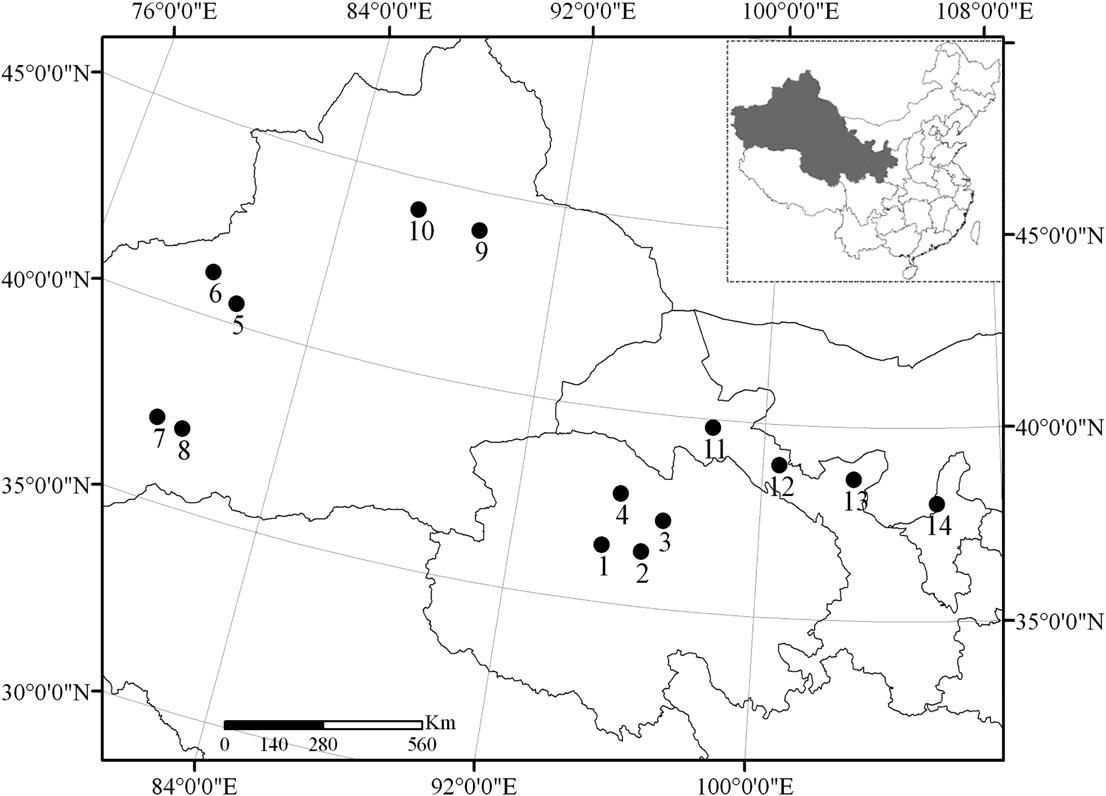Sequence-related amplified polymorphism (SRAP) markers were used to assess the genetic diversity and population genetic structure in fourteen wild populations of Lycium ruthenicum from Northwestern China. Thirty-one selected primer combinations produced 468 discernible bands, with 398 (85.04%) being polymorphic, indicating relatively high genetic diversity at the species level. Analysis of molecular variance showed that the genetic variation was found mainly within populations (84.45%), but variance among populations was only 15.55%. And there was a moderate genetic differentiation (Gst 0.2155) among populations. Mantel test revealed a significant correlation between genetic and geographic distances (r 0.303, P 0.004), and the unweighted pair-group method using arithmetic average clustering and principal coordinates analysis demonstrated similar results. A total of nine significant (P < 0.05) correlations were detected between three indices of genetic diversity and seven ecogeographic factors. Also recommendations for conservation of the endangered species resources and breeding program are proposed.

Additional Information:
1. Author Information: Zenggen Liu, Qingyan Shu, Lei Wang, Minfeng Yu, Yanping Hu, Huaigang Zhang, Yanduo Tao, Yun Shao
Correspondence: zangyaokaifa@163.com
2. Published : Biochemical Systematics and Ecology 45 (2012) 86–97
